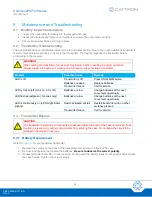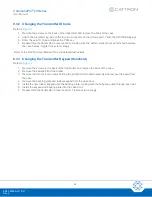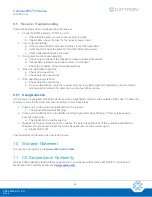
CommandPro
®
23 Series
User Manual
17
9M02-9028-A011-EN
Rev 4
6.1
Receiver/Decoder
The receivers use an advanced synthesized FM Receiver designed to work in the presence of potentially
interfering signals, such as might be encountered from pagers, cell phones, two-way radios, etc. The
microprocessor-based decoder ensures a great deal of safety as well as versatility. Commands are received on
one of 81 possible frequencies and are checked against a 16-bit address code for proper identity and further
tested against a 10-bit CRC check. This ensures only valid information meant only for the particular unit is
decoded. The microprocessor contains a programmable memory that retains the frequency, address and
particular operating parameters of the system.
The receiver uses robust 8 A relays to ensure long, reliable life of the system.
6.2
AutoLink
Some receivers utilize AutoLink to synchronize the ID Code between the transmitter and receiver. This allows a
quick and easy method to replace a transmitter with a spare (see
6.3
Power Supply
Standard operating power for the receiver is 12 VDC automotive power, but it will operate from 12 to 24 VDC.
6.4
Receiver Diagnostics
The receiver assembly monitors and indicates its status on a continuous basis. The diagnostics are presented in
a simple, easy to understand format.
6.5
Safety Features
Controlling industrial and commercial equipment requires that the wireless control system be reliable with built-in
safety features. These receivers offer a maintained link system. This means that in order for the system to
operate, the signal from the transmitter must be continuously received by the receiver. Loss of the transmitter
signal causes the safety system to remove all commands from the system and open the safety relay contact.
Each transmission goes through several checks to ensure the receiving information is error free. Millions of
combinations of frequencies and address codes mean that no two systems will ever be produced with the same
frequency and address code.
The safety relay is controlled by the microprocessor and by a hardware circuit to ensure operation even in the
event of a circuit failure. During normal operations, this relay is closed (activated). If, for any reason, valid data is
not being received, this relay opens.











































